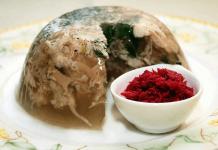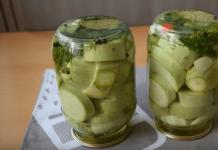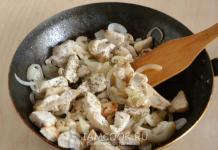Master Nature, skillfully playing with various colors and shades, creates incredibly beautiful compositions that you want to repeat in your own garden. When creating a future pictorial masterpiece, the main bet can be placed on the color violet, which conveys emotionality, great sensitivity, high spirituality and is optimal for meditation and contemplation.
This “cold” color is ideal for dreamy people who carry their fantasies far beyond the limits of the possible; this favorite color of intellectuals and harmoniously developed people has a positive effect on brain activity.
Purple color: meaning
The color purple, located in the color palette between red and blue, is associated with mysticism in various countries. It is considered a symbol of the night, which hides many secrets and mysteries under the cover of stars. Purple flowers planted in garden beds look rich and rich; admiring them brings peace, tranquility and pleasure. In nature there is a fairly wide range of flowers with purple colors, so choosing plants that will harmoniously replace each other throughout the season and harmoniously color the garden with purple colors is not difficult.
Everyone's favorite lilac
First of all, when you mention purple, a gorgeous bush of fragrant lilac appears in your thoughts - the primary crop of all parks and gardens, characterized by colorful large inflorescences and speaking of the arrival of spring with its warm days.
The Twilight lilac variety will decorate any garden with purple-violet buds on tall bushes (about 4 meters), dark green leaves and a sparse spreading crown. The heady strong aroma will enchant you on spring evenings, and the luxurious flowering will delight you for about 3 weeks. Lilac varieties such as “Danton”, “Maksimovich”, “Mulatto”, “Lady Lindsay”, “President Poincaré”, “Charles Joly”, “Raj Kapoor” will decorate any garden because they have gorgeous purple flowers.

The photo conveys all the beauty of these gorgeous shrubs, loved by many gardeners.
Crocuses - the purple charm of spring
Beautiful crocuses, whose goblet-shaped flowers “scream” about the arrival of the long-awaited spring, will speed up the passing of winter with splashes of purple paint against the background of melting snow. Reproduction of such beauty is not particularly difficult and consists of separating the children from the mother plant, which in a year will delight with the first flowering. To create an original composition, purple flowers are recommended, the names of which are given below:

You can dilute a monogamous landscape with the colors of the sun using the Violet Queen variety, whose yellow-violet flowers will add freshness, brightness and contrast to the composition.
Irises are the decorative basis of any flower garden
Fading crocuses can quite harmoniously replace everyone's favorite and widely cultivated irises (otherwise known as iridodictium reticulum). This flower has a large number of varieties, which are enough to create a chic flower garden exclusively from irises. The noble plant is characterized by the graceful shape of large flowers, consisting of three (sometimes six) petal perianth lobes. The internal and external lobes of the crop, which blooms in May-June, are different in shape, color and size. The sword-shaped iris, which has a beautiful purple flower and is characterized by late flowering, stands out for its original beauty. It is also called Japanese iris, since it was in Japan that most varieties of bearded irises were bred. The Socerez Triumph variety has an unusual color: almost blue petals, as if shrouded in a purple web, on top of which the careless artist applied more strokes of yellow.

The following varieties diversify the flower garden with purple colors:
- Russian iris, characterized by medium-sized fragrant flowers. This variety is low-growing and suitable for growing on rocky areas.
- Siberian iris. The height of a fairly hardy flower is approximately 1 meter. Narrow-linear light green leaves and the absence of a beard on the outer perianth lobes are the main characteristics of this species.
- Winners Sackl. Characterized by abundant annual flowering, this variety stands out from the rest with dark purple flowers (photo) with a white spot under a blue beard.
- Merion Maid is a solid light blue variety with some hint of purple and a bright yellow beard. Its large flowers look original both in a flower bed and in a bouquet.
Hyacinth is an indispensable component of the purple palette
When it comes to flowers that add a splash of color to garden beds, it is worth mentioning purple flowers, whose names translated from Greek mean “flowers of rain.” These are hyacinths. Strong, luxurious, dense inflorescences captivate with their pleasant aroma, delicate beauty and rich color palette, in which purple is effectively represented.

These are varieties such as “Blue Jacket” and “Ostara”, which have a blue-violet color; “Peter Stuycent” is characterized by a blue-lilac hue; "Woodstock" and "Maria" are dark purple varieties, "Bismarck" is a light purple flower, and "Miss Saigon" is a purple-red flower.
This unusual purple tulip
Tulips continue the purple wave of flowering, in particular varieties such as 'Traveler', with its beautiful rich purple hue, 'Chanson', characterized by dark blue-violet goblet flowers edged with a white contrasting border. The “Alibi” variety, characterized by a light purple color, and the dark violet, almost black with white edging, “Jackpot”. The lily-purple flower “Burgundy” and the purple variety “Ballad” with a white border will stand out for their original color in a well-arranged flower arrangement. "Porple Dream" diversifies this purple collage by adding a red tint.

Decorative onions bloom with purple flowers, various varieties of which can be used as a worthy decoration for any flower bed. These are Aflatun onion, Karatav onion, giant onion, Christoph onion.
Purple gladioli in the garden
Gladioli are the decoration of any flower bed. Purple flowers have varieties such as “Joseph Gyulot”, “Peregrina blue-violet”, “True Bru”, “Blauer Triumphant”, “Bl. Admiral", "Vaichenblau", "Othello". The “Aida” variety stands out with dark purple flowers and red inside. Violet-blue flowers of the Blyau Shengayt variety add variety to any flower arrangement. The “Pearl Flora” variety has rich dark purple flowers, which will look very harmonious next to the “Belladonna” variety, whose pink-lilac flowers will only decorate the composition.
Clematis - the basis of a vertical composition
An indispensable attribute of a vertical garden are climbing plants, many of which boast purple flowers. Violet clematis and Jacquemin's clematis are characterized by abundant flowering. Such a purple hedge with light stripes that border clematis flowers will brightly decorate the garden, bringing it to life to the fullest. The clematis variety "Luther Burbank", planted on the outside of the garden composition and blooming with large purple flowers, will catch the admiring glance of more than one passerby.

The variety “Minister”, whose flowers are also decorated with a purple-violet stripe, can add a blue tint to the purple composition.
Wisteria - purple beauty
One of the key components for vertical gardening is wisteria - a perennial plant that brings true joy to connoisseurs of beauty with its beauty. Growing up to 18 meters in height, the flower is characterized by drooping vine branches and leaves up to 30 cm long. The purple representative, the “Multiyuga” variety, is distinguished by large flowers collected in large inflorescences up to 30-50 cm in length, and is characterized by strong growth and bright flowering.
Oxalis - an indoor miracle
Indoor compositions can be “violet” by a plant such as wood sorrel, called “clover of happiness” in Europe. According to legends, it attracts good luck to the house in which it grows. In this case, the following condition must be met: the wood sorrel must change its owner on the last day of the outgoing year. Therefore, on New Year's Eve, this plant with purple leaves is considered the best gift. It is the oxalis trefoil, symbolizing the Holy Trinity, that is the national symbol of Ireland, depicted on its coat of arms.

A characteristic feature of this unusual indoor plant is the folding and lowering of its leaves at nightfall or in cloudy weather. At the same time, it seems that the flower with purple leaves has turned into a flock of butterflies; This is why wood sorrel is also called “Madame Butterfly” and “butterfly flower”.
Zebrina is a houseplant characterized by oval leaves with a shiny surface, multi-colored at the top and purple underneath.
The violet-white flowers of the common violet will decorate any room in which it grows. This fabulously beautiful plant delights with its variety of shapes and shades. Violet is used for indoor growing. She also feels great in open ground, especially comfortable in the shade of trees.
Nature has not endowed some home and garden flowers with the ability to accumulate chlorophyll, which gives stems and leaves their usual green color. Instead, the lion's share in the structure of cells is occupied by anthocyanins - plant glycosides, due to which the leaves turn red or purple. There are many such amazing plants: some have an unusual color on only one side of the leaves, others have spots, stripes or a pattern along the edge of the leaf, and for others, purple is the dominant color. Among indoor crops with spectacular foliage, you can find both unpretentious ones, capable of growing in almost any conditions, and rather capricious ones to care for, requiring compliance with certain climatic conditions.
- When the rheo blooms, small white flowers appear in a box of boat-shaped bracts.
- The leaf plates below are colored crimson-violet, the saturation of which varies depending on the amount of sunlight reaching the flower.
- The upper side of the long leaves can be solid green or variegated in color, consisting of longitudinal white and green stripes.
- Oxalis - oxalis leaves have a sour taste due to the high content of oxalic and malic acid.
- Butterfly flower or Madame Butterfly - triangular leaves, when spread, resemble the wings of fluttering moths.
- Day-night - the plant reacts to lighting: at night it folds its leaf lobes, and with the onset of morning it lifts them up.
- Crocus. The bulbous plant, quite common, begins to bloom in early spring. Many varieties of this crop have purple flowers. If you plant several at once on one plot, you will get a very unusual and beautiful combination. By the way, all varieties of crocus develop well and grow both in the shade and in sunny areas. They will take root in any soil without stagnant moisture and do not require special care. They are not afraid of frost and snow, but their flowers open only in sunny weather, and vice versa in cloudy weather: they close their petals tightly. They can grow in one place for up to 5 years, after which it is recommended to transplant them to a new place of growth. They will look great among lawns and stones. They are also used for winter forcing;
- Hyacinths - they are called the kings of spring! Translated from Greek, their name translates as “flower of rains,” which is probably due to the rainy period in the place of its origin. These plants themselves are beautiful, strong, at the same time delicate and very beautiful, they also have a very pleasant smell and a variety of purple shades;
- Tulips. There may not be many varieties of this plant with purple flowers, but they look very impressive. The flowers themselves are large, often with a white edge;
- Rhododendron. It is an evergreen shrub that loves sun. There are not so many varieties of this shade, but they look very beautiful and bloom for a long time. It is used for both single and group landings;
- Lilac. She has a lot of fans. This plant got its name thanks to the purple hue of its flowers!;
- Delphiniums and lupins. The first ones have semi-double flowers of a dark color. The flowers of the 2nd plant are also unusual and very beautiful;
- Irises. They don't have any colors! They are considered the leaders among purple flowers. The coloring of some of their varieties is very unusual and immediately attracts the eye, as does the shape of the flowers themselves;
- Decorative bow. Its flowers are collected in graceful inflorescences. It can become a decoration for any garden plot;
- Salvias, aquilegias, Wittrock violets, campanulas, phloxes and aconites begin to bloom in mid-summer;
- Purple mackerel and purple hazel also begin to unfurl their beautiful leaves in the summer;
- Rose. Although this shade is not very characteristic of roses, nevertheless, varieties of this color exist in nature;
- Bedleya Davida or "Black Knight" is an interesting exotic plant. It blooms thickly, long and majestically. The inflorescences are velvety, consisting of small flowers. Their aroma is similar to that of honey, which is why they attract butterflies so strongly. It grows very quickly. Bushes can be planted either singly or in groups;
- Cat mint. It blooms with small tubular flowers of a light shade. They exude a very pleasant aroma and bloom for a long time. If faded inflorescences are removed in time, flowering will recur;
- Lilies. There are some hybrids that grow quickly, have a beautiful appearance, and their flowers sometimes reach a diameter of 20 cm!;
- Gladioli. Hybrid varieties can bloom with buds that are colored in several shades at once;
- Clematis. A climbing plant that blooms luxuriantly and has recently become increasingly popular among gardeners;
- Wisteria grandiflora "Multiuga". This plant is a vigorous growing vine. It blooms long and beautifully. Flowers reaching a length of 30-50 cm are collected in inflorescences. The shrub itself is perennial, and sometimes reaches 18 m in height, the leaves are up to 30 cm long. It blooms in early spring, and in the southern regions - in May;
- Asters. Very common flowers, begin to bloom in the 2nd half of summer.
- Lilies. There are some hybrids that grow quickly, have a beautiful appearance, and their flowers sometimes reach a diameter of 20 cm!;
- Clematis. A climbing plant that blooms luxuriantly and has recently become increasingly popular among gardeners;
- Crocus. The bulbous plant, quite common, begins to bloom in early spring. Many varieties of this crop have purple flowers. If you plant several at once on one plot, you will get a very unusual and beautiful combination. By the way, all varieties of crocus develop well and grow both in the shade and in sunny areas. They will take root in any soil without stagnant moisture and do not require special care. They are not afraid of frost and snow, but their flowers open only in sunny weather, and vice versa in cloudy weather: they close their petals tightly. They can grow in one place for up to 5 years, after which it is recommended to transplant them to a new place of growth. They will look great among lawns and stones. They are also used for winter forcing;
- Hyacinths - they are called the kings of spring! Translated from Greek, their name translates as “flower of rains,” which is probably due to the rainy period in the place of its origin. These plants themselves are beautiful, strong, at the same time delicate and very beautiful, they also have a very pleasant smell and a variety of purple shades;
- Tulips. There may not be many varieties of this plant with purple flowers, but they look very impressive. The flowers themselves are large, often with a white edge;
- Rhododendron. It is an evergreen shrub that loves sun. There are not so many varieties of this shade, but they look very beautiful and bloom for a long time. It is used for both single and group landings;
- Lilac. She has a lot of fans. This plant got its name thanks to the purple hue of its flowers!;
- Delphiniums and lupins. The first ones have semi-double flowers of a dark color. The flowers of the 2nd plant are also unusual and very beautiful;
- Irises. They don't have any colors! They are considered the leaders among purple flowers. The coloring of some of their varieties is very unusual and immediately attracts the eye, as does the shape of the flowers themselves;
- Decorative bow. Its flowers are collected in graceful inflorescences. It can become a decoration for any garden plot;
- Salvias, aquilegias, Wittrock violets, campanulas, phloxes and aconites begin to bloom in mid-summer;
- Purple mackerel and purple hazel also begin to unfurl their beautiful leaves in the summer;
- Rose. Although this shade is not very characteristic of roses, nevertheless, varieties of this color exist in nature;
- Bedleya Davida or "Black Knight" is an interesting exotic plant. It blooms thickly, long and majestically. The inflorescences are velvety, consisting of small flowers. Their aroma is similar to that of honey, which is why they attract butterflies so strongly. It grows very quickly. Bushes can be planted either singly or in groups;
- Cat mint. It blooms with small tubular flowers of a light shade. They exude a very pleasant aroma and bloom for a long time. If faded inflorescences are removed in time, flowering will recur;
- Lilies. There are some hybrids that grow quickly, have a beautiful appearance, and their flowers sometimes reach a diameter of 20 cm!;
- Gladioli. Hybrid varieties can bloom with buds that are colored in several shades at once;
- Clematis. A climbing plant that blooms luxuriantly and has recently become increasingly popular among gardeners;
- Wisteria grandiflora "Multiuga". This plant is a vigorous growing vine. It blooms long and beautifully. Flowers reaching a length of 30-50 cm are collected in inflorescences. The shrub itself is perennial, and sometimes reaches 18 m in height, the leaves are up to 30 cm long. It blooms in early spring, and in the southern regions - in May;
- Asters. Very common flowers, begin to bloom in the 2nd half of summer.
- Arizema - this unusual plant is best suited for areas where the soil has been created and is always moist. Flowering begins in late spring or early summer. By the end of the summer period, brightly colored berries are formed from small flowers.
- Arizarum is another representative of this family. It also respects shade and moisture. The inflorescences are unusual in appearance, reminiscent of a mouse diving into a hole. They bloom, decorating the arrow-shaped foliage.
- Bluebell - among them there are biennials that are transplanted into a flowerbed so that they can bloom in the spring. There are also more frost-resistant perennial varieties. Many varieties are quite easy to grow.
- Arctotis is a plant distinguished by large chamomile-like inflorescences on tall, fairly branched stems. In hybrid species, flowers are found in white, yellow, blue, orange and even red shades. They open only on sunny days.
- Borets is a tall plant, more suitable for distant areas of borders, and grows normally in the shade. The flowers are helmet-shaped, the peduncle is tall.
- Amaryllis - grown in places protected from wind influences.
- Browallia is a bushy plant with rather weak stems. Grown in
- Rezuha - during the growth process it covers the entire area. The foliage is gray-green, the flowers are white. The flowering period occurs in April or May.
- Alstroemeria - does not grow everywhere, only in suitable soil places. It begins to bloom in June and ends in August. In the first year there is very little flower development. It is recommended to plant rather than root shoots.
- The columbine is a graceful looking plant. The stem reaches a height of one meter. Flowers of bright colors are great for decorating rock gardens.
Show all
Ginura
Translated from Greek, the name of the flower means “woman with a tail.” This fast-growing crop is grown as a hanging plant: shoots up to 50 cm long with alternate carved leaves hang beautifully from a hanging basket or flowerpot. The surface of the leaves and stems is covered with numerous small violet hairs, due to which the entire ginura bush looks deep purple.
Of the fifty natural species, only one is grown indoors - orange ginura. In the warm season, it blooms with small flowers of a rich yellow-orange hue. However, not everyone likes their smell, so it is recommended to pick off the emerging buds. Abundant flowering is most often a sign that the plant has reached maturity and is preparing to die. By this time, it usually grows and significantly loses its decorative effect - it stretches out, turns pale, its lower leaves fall off, and its stems become bare. But this is not scary, you need to cut the apical cuttings 7-8 cm long and root them in any substrate.
Ginura is one of the most unpretentious plants, but for successful growth and development it needs to be provided with bright lighting and long daylight hours. If the flower lacks light, its hairs will lose their purple color and the velvety leaves will turn dark green. If this happens, it is enough to move the ginura to where it will receive a small amount of direct sunlight. After 10-15 days, its leaves will acquire a rich purple hue.
Rules for caring for ginura.
Air temperature | 16...+24 °C throughout the year |
Lighting | Bright or moderate. In the autumn-winter period, if the room temperature is above +13...+15 °C, it is necessary to maintain a daylight hours of 10-12 hours using fluorescent or LED lamps |
Air humidity | Doesn't play a special role. When spraying, do not allow drops of water to fall on the “fluffy” leaves, otherwise unsightly brown spots may appear on them. |
Abundant in summer and moderate in winter. Ginura does not tolerate drying out of the earthen ball in a pot, but after watering it quickly recovers |
|
Top dressing | From March to October every 2 weeks, in winter – once a month |
Transfer | Every year in the spring. It is better not to replant specimens older than 2 years, but to rejuvenate them. |
Any loose with a neutral acidity level. It is preferable to use a mixture of equal parts of leaf soil, turf and sand. |
|
Reproduction | By apical cuttings at any time of the year. |
The purple leaves of ginura will look great against the backdrop of a brightly lit window or in combination with the light green foliage of other decorative indoor plants. To highlight the beauty of the flower, it is recommended to pinch it regularly to stimulate the growth of side shoots.
Zebrina
Hanging zebrina is another flower with purple leaves. True, only the lower part of the leaves has a rich purple hue. The combination of unusual coloring with silver-green stripes running along the leaf blades gives the flower a special decorative appearance. Zebrina, like most Tradescantia to which it belongs, is distinguished by its unpretentious nature and rapid growth. It can be used as an ampelous or ground cover plant.
Hanging zebrina is a practically indestructible plant, one can only envy its vitality: when the nodal points come into contact with the soil, roots appear very quickly, and just as easily the cuttings take root in water or any substrate. Zebrina can be safely recommended to beginners, as it is easy to care for and easily adapts to any room conditions.
Air temperature | 16...+24°С throughout the year |
Lighting | Zebrina can grow in a shaded area, but the undersides of the leaves will turn pale and green. For normal growth and maintenance of decorativeness, the plant requires bright lighting with some direct sunlight. In winter, when growing in warm climates, it is advisable to provide additional lighting. |
Air humidity | Doesn’t matter - the flower tolerates the dry air of apartments very well. |
Abundant after the top layer of soil dries 1.5-2 cm. Overmoistening the earthen clod is unacceptable, otherwise the leaves will dry out |
|
Top dressing | |
Transfer | Every year in the spring. It is advisable to replace 2-3 year old specimens with young ones grown from rooted apical cuttings |
Reproduction | Apical cuttings - they take root well in water at any time of the year. |
Zebrina loses its attractiveness with age, so it is advisable to rejuvenate it every year: cut off the tops of the shoots and root in water or a pot with nutritious soil. In this case, at least 5-10 cuttings should be planted in one flowerpot at the same time. After 4-6 weeks, the young zebrina will have grown and will be ready to take the place of the mother bush.

Zebrina hanging
Reo
The rheo flower belongs to the Tradescantia genus, although until recently it was classified as a separate monotypic genus. The plant is named after the female creature of the same name - the nymph Reo, so the species name correctly sounds like Reo tepalsata. In addition to the official name, you can also find others: Rook of Moses, Reo variegated or Tradescantia variegated. They best characterize the general appearance of the plant:
The stem of the reo is fleshy and erect, but in side lighting the heavy shoots bend to the side and hang, giving the bush an arbitrary shape. The height of the stems of an adult plant reaches 50 cm. As they grow, the lower leaves die off and expose part of the stem, which is why the erect shoots resemble miniature palm trees. Like all tradescantia, reo grows quite rapidly, filling a capacious flowerpot with rhizomatous shoots in 1-2 years. Caring for the plant is simple.
Air temperature | |
Lighting | Reo is photophilous, so the lighting should be bright, but without direct sunlight. With a lack of light, the leaves turn pale and the bright purple color disappears |
Air humidity | The plant is undemanding to humidity, but the air in the apartment should not be dry. Periodic spraying with settled soft water is useful. |
Regular, but not too abundant - the soil in the pot should always be slightly moist |
|
Top dressing | From March to October every 2-3 weeks, in winter - once a month |
Transfer | Young plants must be replanted annually in the spring. Adult specimens that have reached impressive sizes - every 3 years |
Any for indoor decorative foliage crops |
|
Reproduction | By apical cuttings, dividing the bush and seeds. With the seed method, varietal qualities (colored leaves) are lost. |
Reo not only has an attractive appearance, she is able to improve the lives and relationships of household members: drive away grievances and lift spirits, set them in a positive mood and protect them from bad deeds, find and implement new creative ideas, find happiness and harmony.

Reo bedspread
Oxalis
Unlike the above-mentioned house flowers, all the beauty of which lies in the attractive foliage, oxalis is both an ornamental foliage and a beautifully flowering plant. The perennial genus includes varieties with green, burgundy and purple leaves that, under favorable conditions, produce soft pink flowers that rise gracefully above the foliage from spring to fall.
Amateur flower growers rarely use the official name of the plant; you can often hear other “nicknames” from them:
Oxalis leaves fold into a triangle not only at night, but also in cloudy weather or from mechanical irritation caused by touch or slight shaking.
In general, sorrel is unpretentious, but you need to take into account some growing features.
Air temperature | In summer +18...+25 °С, in winter +12...+18 °С |
Lighting | Diffuse light with protection from direct sunlight |
Air humidity | |
Moderate and frequent to keep the soil slightly moist. It is preferable to water the oxalis in a tray and use purified water with a minimum amount of lime compounds. In winter, you should water much less frequently, as the plant enters a dormant period at this time. |
|
Top dressing | From March to October every 2-3 weeks with phosphorus fertilizer, do not feed in winter |
Transfer | Replant as the bush grows, choosing spring or early summer for planting |
Universal for indoor plants |
|
Reproduction | Dividing the bush |
When growing Madame Butterfly, you should remember that with the beginning of autumn, the flower stops producing new leaves and enters a dormant period. This behavior should not be a cause for concern, but a signal to change the living conditions: lowering the air temperature and reducing watering. With the arrival of spring, when new leaves appear from the ground, you can return to your previous care schedule.

Irezine
Irezine is a genus of spectacular ornamental deciduous plants with red-violet leaves, among which there are indoor and garden forms. These are low-growing or climbing plants, reaching a height of 50-60 cm. Irezine leaves are round or elliptical, and with sufficient light they are colored a rich red-purple color. If the plant cannot receive the required amount of light, its shoots will stretch out and turn pale, which will significantly reduce the decorativeness of the flower.
When growing irezine, you should remember some care features.
Air temperature | In summer +16...+26 °С, in winter +16...+20 °С. In the summer heat, when the thermometer rises above +30 °C, the leaves may lose their elasticity |
Lighting | Diffused light with protection from direct sunlight. The optimal duration of daylight hours is 15 hours, so in winter it is important to use lamps with fluorescent or LED lamps |
Air humidity | Frequent spraying with settled soft water is useful. |
Use soft, settled water as the top layer of soil in the pot dries. In winter, when the contents are cool, the irezine should be watered less frequently, but the earth clod should not be allowed to dry out completely. |
|
Top dressing | From March to October every 10-15 days, in winter once a month with a half dose of fertilizer |
Transfer | In open ground conditions it is cultivated as an annual. When growing in an apartment, it is necessary to replant after the plant in the pot becomes crowded. Optimal time: spring |
Universal for indoor decorative foliage plants |
|
Reproduction | By apical cuttings by rooting in water or wet sand |
The irezine bush will be more lush and attractive if the tops of the shoots are regularly pinched or trimmed. Removing the growing point will result in the formation of numerous side shoots.

Poinsettia
Poinsettia is rightfully considered one of the most beautiful indoor plants. It is customary to sell it on the eve of the New Year holidays, since it is at this time that bright red bracts appear on the bushes - modified leaves surrounding small, inconspicuous flowers. Traditional poinsettia varieties have bright red or burgundy bracts, although varieties have already been bred in which they are white, yellow, peach, pink and even bicolor.
In flower shops, poinsettia is often sold under the name Christmas or Star of Bethlehem. This is due to the fact that the spectacular flowering coincides with the New Year and Christmas holidays: in the USA alone, the number of sales at this time of year is about 100 million copies. It was from there that the tradition of giving a bush with a red “flower” came to us for the New Year.
Poinsettia cannot be called an easy-to-care plant: it is very light-loving, requires regular spraying, and does not tolerate excessive waterlogging, drafts and sudden temperature changes.
Air temperature | 18...+25 °С, during flowering period (winter) +14...+16 °С |
Lighting | Bright with enough sunlight. In summer it is useful to display the flower in the open air - a balcony or loggia |
Air humidity | Frequent spraying with settled soft water is required |
Before flowering – frequent, after flowering – rare |
|
Top dressing | From March to October 2 times a month at regular intervals |
After flowering, the shoots must be cut short, leaving no more than 10 cm from the ground level. |
|
Slightly acidic soil mixture of clay-turf, leaf and turf soil with sand in a ratio of 3:2:1:1 |
|
Reproduction | For apical cuttings: in spring or early summer, they should be kept in warm water so that the milky juice flows out, then the cuts should be air-dried and planted in a mixture of equal parts of peat and sand. |
It is very difficult to wait for re-blooming at home, so the Christmas star is usually grown as an annual plant and thrown away after flowering.
In botanical literature, poinsettia is called the most beautiful euphorbia. Like all euphorbias, the plant secretes milky sap, but it does not pose a danger to humans and animals. Poinsettia juice, if it gets on your hands, can cause mild irritation only in people with hypersensitive skin.

Poinsettia or Christmas star
Begonia royal
Among the numerous forms of begonias, there are varieties with unusual leaf colors - royal, Mason, their varieties and hybrids. Leaf begonias are grown specifically for their spectacularly colored foliage. Today, many varieties have been developed with large green, silver, pink, burgundy, purple and multi-colored leaves. The creative union of nature and man created forms with intricate patterns, borders, spots, strokes and veins that decorate the surface of the leaf plates. The leaves reach 15 cm in length, and their shape is always asymmetrical. The surface of the shoots and leaves is covered with light fluff - short and thick hairs, due to which they appear velvety.
Leaf begonias are quite whimsical and require certain conditions.
Air temperature | 21...+26 °C during the day and +18...+20 °C at night. The daily temperature difference should not exceed 5-6 degrees. In the warm season, it is useful to take them out into the fresh air, provided that the outside temperature is within acceptable limits |
Lighting | Bright diffused light with some sun in the morning or evening. To avoid pulling the bush to one side, you need to rotate the pot around its axis 45 degrees weekly. |
Air humidity | Frequent spraying with settled soft water is necessary. Do not allow drops to fall on the leaves. |
Soft (preferably boiled or filtered) water after the top layer of soil in the flowerpot has dried |
|
Top dressing | From March to October 2 times a month with complex mineral fertilizer |
Transfer | Every year in early spring |
A slightly acidic soil mixture of leaf soil, peat and sand (vermiculite), taken in a ratio of 2:1:1 |
|
Reproduction | By dividing rhizomes, leaf cuttings, fragments of leaf blades in conditions of high humidity |
Some varieties of begonias shed their leaves for the winter and enter a dormant state. Having noticed this behavior of the flower, it is necessary to remove the dried leaves, dry the soil and place the plant in a plastic bag. After 6-10 weeks, when the begonia resumes its growth, you can return to your previous care schedule.

Leaf Begonias
Conclusion
The presented indoor plants with red or purple leaves do not have attractive flowering, but their unusually colored foliage is quite decorative. All of the listed varieties have a common feature: the amount of coloring pigment produced by plant cells directly depends on the lighting (the longer the daylight hours, the brighter the color of the leaves). Otherwise, the growing rules are different.
In the spring, here and there, lilac splashes “flare up”, scattered in different corners of the garden - irises, violets, columbine, pansies. From them you can create wonderful monochrome compositions by selecting plants for the support group of the heroine of the season - lilac, whose flower clouds are sometimes stormy purple, sometimes deep purple, purple, bluish, pink...
Everyone's favorite shrub is often planted near or behind a fence. For most garden plants, the roadside is a zone of extreme conditions. Just to survive, there’s no time for flowers! But there are also pleasant exceptions.
First of all, these are irises, with their rich range of shades ideally “supporting” the lilac clouds from the ground. On poor, compacted soil and even on gravelly soil, they often bloom and look much better than their counterparts, “fatten” in the rich and wetter soil in the garden on the other side of the fence.
In spartan conditions, without watering, without excess nitrogen fertilizers, without neighboring flowers casting a shadow, irises decrease in size, form short, strong peduncles, but the flowers do not become smaller. They are as large as in a regular flower garden.
In the sun on poor soil, decorative lilac onions will also perform excellently. It is certainly good in the garden too. However, here, along with the spectacular fireworks that are shot by the tall flower arrows of this rather large plant, its shortcomings are also striking - early fading long leaves. There are fewer complaints about the flowers behind the fence, and the lilac onion salute rising above the yellowing foliage from a distance is not at all
Confuses the look. If you still want to disguise the leaves drying out at the height of flowering, then the foreground can be filled, for example, with blue long-rhizome cornflower. This aggressor is not allowed into the noble garden, rightly fearing that it will choke out more demanding garden crops. Behind the fence, an overgrown clump after flowering can be immediately mowed with a trimmer. As for onions, in poor soil without watering they do not bother with an abundance of children. Abundant self-seeding is also not dangerous here, so there is no need to cut off the balloons after flowering. The onion salute simply changes color: lilac-lilac gives way to green, and later to straw, and the textured hedgehog arrows delight the eye until autumn.
Closer to the blue part of the spectrum, the flowers of Camassia Leuchtlina are an unpretentious bulbous perennial, which, thanks to its spectacular appearance, can become the main decoration of a flower garden in the garden. Unfortunately, camassia blooms for only two weeks, but this time coincides very well with the flowering periods of lilacs and onions. Once every 5-6 years, nests of bulbs are planted at intervals of 10-15 cm.
In the lupine color palette, light pink shades are added to lilac, violet and blue tones, enriching the lilac range with light romantic chords. After flowering, the trimmer will return the lupine clumps to a neat appearance. New leaves grow very quickly, remaining decorative until the end of the season.
Lupine does not need special care from the gardener and even often runs wild in abandoned areas and along roads, and sometimes “runs away” to the meadow behind the village.
A prerequisite for the plants listed above is sun. Of course, on the northern side, there is no point in “persuading” irises and a group of similar sun lovers to bloom. Other plants will help out here - night violet, aquilegia, cyanosis. They prefer moister soil and grow well in partial shade. This does not mean that they will not survive in the sun; under its rays they can bloom even more luxuriantly, but in this case, watering will be required during drought, while in the shade the soil naturally retains moisture.
Night violet, or matron's noctule, is an unpretentious herbaceous perennial with lilac, lilac and violet flowers fragrant in the evening on erect peduncles up to 80 cm tall. There is also a variety with white flowers. In terms of color, night violet is an ideal complement to lilac, both ordinary and Hungarian. By cutting off fading flower stalks, we prolong flowering until August.
If after flowering you forget about the violet behind the fence, it self-sows and “builds” a retinue of its numerous descendants around the lilac, forming a light accompaniment for a luxurious lilac symphony from year to year. In gardens, night violets often suffer the same fate as decorative onions.
Fans of radishes, arugula and cabbage expel it from the site, because, being a representative of the same cruciferous family, the noctule plant is affected by the same pests as popular garden crops - cruciferous flea beetles and caterpillars of a beautiful butterfly - cabbage whites. But “under the wing” of lilac bushes, on poorer soil and without watering, the leaves of the night violet grow harder and rougher, which makes them much less attractive to pests.
LEGEND, CHARM
Lilac magic can last in the garden all season. A variety of plants anticipate the flowering of lilacs, starting in early spring. These include lilac crocuses, corydalis, coppice and the similar jeffersonia, fragrant violet, periwinkle and cathode. The lilac color is generously spread across the bushes of many varieties of rhododendrons, including early varieties. Ledebur and R. Daurian and late hybrids of the river. Katev-binsky. Blue, blue and violet hyacinths compete with lilacs in terms of aroma power.
In the summer the baton is picked up.
The color violet does not have an unambiguous description of its effect on humans due to its annual bipolarity. There is a certain tradition to consider it the most unusual for perception. Experts in the field of psychology, after conducting certain studies, came to the conclusion that each person reacts to it differently. Including color options for flower buds.
In some countries, the color purple is considered to be a mystical color, making it a symbol of the night, under whose auspices many inexplicable things happen. Some people compare it to the air, which has tropical notes in it. Intellectuals and those who are partial to secrets and travel love this color. But again, psychologists say that it is impossible to determine exactly what types of people are fans of this shade.
Those who love this color and gardening can try to enhance their flowerbed or garden plot by planting purple flowers.
What does the purple color of flowers mean?
In general, purple flowers mean that a person is admired, they also symbolize charm and friendship. Violet itself is a connecting color; it is capable of reconciling and connecting different people. Therefore, purple flowers will help different personalities find a common language. Purple is the favorite color of poets and royalty, which is why compositions made from flowers of this shade look so regal and unusual.
Purple flowers: names
There are many purple flowers in nature, and if you want them not to disappear from your flowerbed over a long period, then you can make a continuous flowering bed out of them.






Selection of photos



Flower with purple leaves: description
Not all lovers of purple flowers have the opportunity to grow them in their garden, but this can be done in an apartment! There is a houseplant that has purple leaves. At first glance it may seem that this is a very rare species, but in fact this is not the case at all. Purple sorrel or oxalis has these qualities. It can be grown not only inside the house, but also in garden plots. It attracts attention with its leaves, which are painted in a rich purple color.
The flowers of this plant are inconspicuous and small and look very delicate against the background of bright foliage. They can be yellow, white or pink. Oxalis blooms for a long time, and 3-4 flowers bloom at the same time, and then, as they fade, they are replaced by new ones.
In many countries around the world, this plant is considered a symbol that brings happiness to the home. It was even popularly nicknamed the “clover of happiness” and is given as a gift in decorative pots for the New Year. There is such a sign: if on the last day of the outgoing year the wood sorrel changes its owner, then it will definitely bring happiness to the house.
Its leaves look like the wings of a butterfly and can fold if the lighting changes. And the main feature of the sorrel is that it closes the leaves in cloudy weather or at night, and in sunny weather, on the contrary, it opens them to the rays of the sun. Because of this, the place where oxalis grows must be chosen carefully. It should be such that the plant does not burn from the sun's rays, but at the same time it should not be in semi-darkness.

Also, the place should be cool, with diffused light. Regular watering is recommended. In nature, it grows in damp places on the banks of ponds and swamps, as well as in the shade of massive trees. Due to prolonged darkness, oxalis will lose the decorative appearance of its leaves, and bright light will simply burn them.
In general, this plant is unpretentious in terms of care. But there are some varieties that require a dormant period, which often occurs in winter. The above-ground part of the plant dies off for 1-1.5 months, and in the spring new shoots appear. During the rest period, the air temperature in the room should be approximately 12 degrees Celsius, but it is not always possible to maintain it. Due to failure to comply with this condition, sorrel often does not grow for many gardeners.
In summer, oxalis needs regular watering, but without stagnation of water. In autumn, watering should be reduced, and in winter, stopped altogether, keeping the soil slightly moist. In dry weather, the leaves can be sprayed, but it is better to do this with boiled, settled water so that later there are no streaks left on the leaves.
The main advantage of this plant is its resistance to pests. And among the diseases it only exposes to rotting of the root system due to excess moisture.
In nature there is a fairly wide range of flowers with a purple color, and by and large it will not be difficult to choose plants that, replacing each other, will color the garden purple throughout the season.
In early spring, many varieties and species can be pleased with their purple color. crocus is a bulbous plant widely used in cultivation, which is also called saffron.
In particular, the flowers of the varieties “Crocus vernus”, “Remembrance”, and also “Flower Record” are purple. The “Pallas” variety is somewhat different, with purple strokes running along its light lilac petals. Crocus Sieber "Violet Queen" and crocus Tomasini "Whitewell Purple" and "Ruby Giant" are characterized by a violet color with a purple tint. Very interesting is the Sieber tricolor crocus, which represents three colors at once: light lilac petals and a yellow center with a white edging. The Queen of the Blues crocus is painted in a soft lilac color. But the golden crocus “Prince Claus” is generally distinguished by its white color, on top of which, however, some Artist left carelessly graceful purple strokes. If you mix specimens of different varieties in one flowerbed, you can get a very picturesque composition.
All varieties of crocuses grow and develop well both in the sun and in the shade. They can be equally successfully placed on the edge of a flower garden or in the shade under bushes. Crocuses feel comfortable on any garden soil without stagnant water. They do not require special care. These first harbingers of spring are not afraid of snow or frost, but crocuses open their flowers only on sunny days and close their petals tightly in cold, cloudy weather. They can be grown in one place for 4-5 years, and then it is better to transplant them to another place. They look impressive in groups in the middle of the lawn, on rocky hills, in mixborders in combination with other spring flowers, and they are also used for winter forcing.
Blooms after the crocuses
, which is usually called reticulated iris (I. reticulate).
It is worth paying attention to the varieties “Pauline” and “Jeannine”
(dark purple flowers), “Michael” (blue mixed with purple), “J.S. Dijt" (red-violet flowers), etc.
 Then comes the turn
hyacinths
(Hyacinthus orientalis), the true kings of spring. Translated from Greek, the name of the plant means “flower of rains,” which is obviously associated with the rainy season in its homeland. Luxurious, strong, dense inflorescences captivate with their delicate beauty, incomparably pleasant aroma and rich color range, which also includes a purple palette: the “Ostara” and “Blue Jacket” varieties are a deep blue-violet color; "Peter Stuyvisent" - blue-lilac; "Maria" and "Woodstock" - dark purple; "Bismarck" - light purple; "Miss Saigon" - red-violet; “Sky Jacket” - soft lilac, etc.
Then comes the turn
hyacinths
(Hyacinthus orientalis), the true kings of spring. Translated from Greek, the name of the plant means “flower of rains,” which is obviously associated with the rainy season in its homeland. Luxurious, strong, dense inflorescences captivate with their delicate beauty, incomparably pleasant aroma and rich color range, which also includes a purple palette: the “Ostara” and “Blue Jacket” varieties are a deep blue-violet color; "Peter Stuyvisent" - blue-lilac; "Maria" and "Woodstock" - dark purple; "Bismarck" - light purple; "Miss Saigon" - red-violet; “Sky Jacket” - soft lilac, etc.
Purple wave of blooms continue in spring
. In particular, this is the “Chanson” variety with dark blue-violet goblet-shaped flowers trimmed with a contrasting white border;
In particular, this is the “Chanson” variety with dark blue-violet goblet-shaped flowers trimmed with a contrasting white border;
medium-colored Triumph tulips with large goblet-shaped flowers, painted light purple - “Alibi” or dark purple, almost black, with a white edge - “Jackpot”;
Liliaceae dark purple tulip "Burgundy",
purple with white border variety “Ballad”,
red-violet “Pierple Dream”;
simple late tulips “Kam Laude”,
"Recrido"; full late tulip “Blue Diamond”;
"Nightrider" (violet-lilac with green),
"Christmas Exotic" (pink-lilac with green);
parrot tulips “Ear” (green strokes on top of soft lilac),
“Traveler” (a very beautiful rich purple shade), “American Agle”,
"Aria Card" (white petals with fringed, often light purple edging) and many other varieties.
 U rhododendron
, an evergreen light-loving shrub, purple flowers will delight such forms as early Dahurian rhododendron (Rh. Dahuricum) and Canadian rhododendron (Rh. Canadense). Among the hybrids we can mention the varieties “Rasputin”, “Blue Peter”, “Blutopia”, “Azurro”. The dense rhododendron “Blue Tit” is very decorative. In landscape design, this plant is highly valued due to the fact that it has a beautiful appearance that lasts for an incredibly long period. It is used in single and group plantings, in borders and on rocky hills.
U rhododendron
, an evergreen light-loving shrub, purple flowers will delight such forms as early Dahurian rhododendron (Rh. Dahuricum) and Canadian rhododendron (Rh. Canadense). Among the hybrids we can mention the varieties “Rasputin”, “Blue Peter”, “Blutopia”, “Azurro”. The dense rhododendron “Blue Tit” is very decorative. In landscape design, this plant is highly valued due to the fact that it has a beautiful appearance that lasts for an incredibly long period. It is used in single and group plantings, in borders and on rocky hills.
When discussing the topic of purple color in the garden, one cannot ignore the favorite color of many. lilac
 Lilac got its name from the color of its flowers. Her palette includes a variety of shades of violet, lilac and lilac:
Lilac got its name from the color of its flowers. Her palette includes a variety of shades of violet, lilac and lilac:
. Varieties with lilac-pink simple flowers: “Buffon”, “Pink Lemoine”.
. Varieties with lilac and pink double flowers: “Belle de Nancy”, “Madame Antoine Buchner”, “Marshal Lannes”, “De Jussier”, “Emile Lemoine”, “Lamarck”, “Louis Henry”, “Marc Miceli”.
. Varieties with purple and violet simple flowers: “Memory of Shpet”, “Reaumur”, “Tombuktu”.
. Varieties with purple and violet flowers: “Lemoyana”, “Congo”, etc.
Hungarian lilac blooms with lilac-violet flowers, Persian lilac - lilac or pink-lilac, Chinese lilac - pink-lilac, etc. Among the most popular are the varieties of lilac Kolesnikov “Leonid Leonov”, “Memory of S. M. Kirov” ", Vekhova variety "Morning of Russia" and many others.

The summer flowering season will open in the purple garden
lupins and delphiniums
.
Among delphiniums, the dark purple varieties “Black Knight” are in greatest demand among amateur gardeners.
and 'King Arthur', which bloom semi-double flowers.
"Memory of the Cranes"
"Morpheus" with semi-double purple flowers, etc.

The true favorites of purple (and not only) colors are . You won’t find any tones and combinations among them! Truly, these are rainbow flowers... They are all worthy of admiration, and it is very difficult to single out any varieties among all this magical diversity. However, if we talk about irises, then how can one not remember its bearded representatives - perhaps the brightest and most widespread among all irises.
For example, bearded irises boast original colors:
"Gouin Mai Wei";
"Sjocle Step" (white petals with dark purple corrugated edging),
“Gala Madrid” (the lower petals, that is, the beards, are deep purple with a red-lilac edging, and the upper petals - the fols - are painted in a hot yellow color),
"Timescape" (light lilac flowers),
“On Edge” (the lower petals are white with a violet-blue edging, the upper ones are soft lilac, almost blue),
"Local Color" (red-orange beard and purple falls),
"Dark Tresari" (lilac-purple beard),
“Feture Attraction” (with lilac-violet foam on the petals),
"Diversion" (lavender-purple flowers with a smoky brown bloom),
"Vienna Waltz" (corrugated purple-pink variety) and many others.
 The sword-shaped iris is distinguished by its exceptional beauty, which differs from the bearded iris in that it blooms longer, later and has large flowers. This plant is also known by its name, since it was in this beautiful country that most varieties of bearded irises were developed, which have been successfully cultivated for more than 500 years. In particular, the Crystal Haylow variety is dark purple with bright yellow streaks in the center, and the Gaste variety is purple-white with yellow in the center. The Socerez Triumph variety is royally impressive, distinguished by its completely unusual color: as if someone had wrapped the light blue, almost blue, petals in a purple cobweb, on top of which they also added five more yellow strokes.
The sword-shaped iris is distinguished by its exceptional beauty, which differs from the bearded iris in that it blooms longer, later and has large flowers. This plant is also known by its name, since it was in this beautiful country that most varieties of bearded irises were developed, which have been successfully cultivated for more than 500 years. In particular, the Crystal Haylow variety is dark purple with bright yellow streaks in the center, and the Gaste variety is purple-white with yellow in the center. The Socerez Triumph variety is royally impressive, distinguished by its completely unusual color: as if someone had wrapped the light blue, almost blue, petals in a purple cobweb, on top of which they also added five more yellow strokes.
 They bloom with flowers collected in purple inflorescences, various varieties
decorative onions
, which will become a worthy decoration for any flower bed: Karatav onion, giant onion, Aflatun onion, Christophe’s onion, etc. (you can read more about this in the article “Onion beds are elegant”).
They bloom with flowers collected in purple inflorescences, various varieties
decorative onions
, which will become a worthy decoration for any flower bed: Karatav onion, giant onion, Aflatun onion, Christophe’s onion, etc. (you can read more about this in the article “Onion beds are elegant”).
At the height of summer, the purple palette expands significantly due to flowering salvia, aquilegia, Wittrock violet, aconite, campanula, phlox
etc.
The queen of flowers can also contribute to the purple palette of the garden
- rose
.
 This regal plant is beautiful in any guise, but those of its representatives that are colored purple (not very characteristic of roses) look especially impressive. Take, for example, varieties:
This regal plant is beautiful in any guise, but those of its representatives that are colored purple (not very characteristic of roses) look especially impressive. Take, for example, varieties:
moss rose “Nuits de Young”;
floribunda roses "Rhapsody in Blue", which bloom with deep purple flowers.
The bluish-lilac color will be provided by hybrid tea roses “Mainzer Fastnacht” and “Waltztime”.
The flowers of the Blue River and Paradise varieties have a red-violet border.
The Smoky variety attracts attention with its smoky red-violet color.
The flowers of the “Charles de Gaulle” variety are also light purple.
 Rich dark purple-red color will bring to the garden design
budleya david
"Black Knight" is an original exotic plant that blooms luxuriously, thickly and for a long time. It has full velvety inflorescences of small flowers that smell like honey and attract butterflies.
Rich dark purple-red color will bring to the garden design
budleya david
"Black Knight" is an original exotic plant that blooms luxuriously, thickly and for a long time. It has full velvety inflorescences of small flowers that smell like honey and attract butterflies.
Grows quickly. You can plant it as a separate bush on lawns or in groups. 
It blooms with small light lilac tubular flowers placed on straight stems.
(Nereta mussinii). The flowers have a pleasant aroma. The flowering period is quite long. Removing spent blooms can encourage re-blooming.
Sometimes purple color is found among
lilies
. For example, the lily L/O “Triumfator Zanlofator” blooms with red-violet flowers with white at the ends of the petals. This is a hybrid of a new group, obtained by crossing Longiflorum hybrids with Oriental hybrids. It is distinguished by its strong growth, exquisite beauty and flower size up to 15-20 cm in diameter.
Varieties with purple flowers of various shades have gladioli
. This group includes long-known (old) varieties:
This group includes long-known (old) varieties:
"Joseph Gulot"
"Blauer Triumphant"
"Peregrina blue-violet"
"Blue Admiral", "True Blue",
"Aida" - flowers are dark purple, red in the throat;
"Faichenblau"
"Othello" - pure purple flowers;
"Blue Royal" - violet-blue, with a light center;
“Blyau Shengayt” - violet blue;
"Blue Herald" - light blue with purple lapels, etc.
From a series of new varieties, we can highlight “Wind Song”, the flowers of which are colored red-lilac and have a light yellow spot in the middle. The variety "Pearl Flora" with rich dark purple flowers is also very beautiful. If you plant the Belladonna variety of a delicate lilac-pink color next to it, you will get a very pretty flower bed.
Separate topic
- climbing plants
, which are an indispensable attribute of vertical gardening. Many of them also bloom with purple-lilac flowers.  First of all, we should remember a plant that is very fashionable in landscape design today - clematis
, namely purple clematis (Clematis viticella) and Jackman clematis (Clematis x Jackmanii). The clematis variety "The President" blooms profusely with deep purple-violet flowers bordered at the edges by a lighter stripe. 'Gipsy Queen' has very dark purple-violet flowers. Recently, the variety “Luther Burbank”, which blooms with large purple flowers, and the variety “Romantika”, which resembles a dark blue-violet curtain during flowering, have become widespread. No less interesting is the “Minister” variety with violet-blue flowers, also decorated with a purple-violet stripe.
First of all, we should remember a plant that is very fashionable in landscape design today - clematis
, namely purple clematis (Clematis viticella) and Jackman clematis (Clematis x Jackmanii). The clematis variety "The President" blooms profusely with deep purple-violet flowers bordered at the edges by a lighter stripe. 'Gipsy Queen' has very dark purple-violet flowers. Recently, the variety “Luther Burbank”, which blooms with large purple flowers, and the variety “Romantika”, which resembles a dark blue-violet curtain during flowering, have become widespread. No less interesting is the “Minister” variety with violet-blue flowers, also decorated with a purple-violet stripe.
Wisteria is unusually beautiful in bloom.

Wisteria grandiflora “Multiuga” is widely used in vertical gardening - an exquisite vine characterized by strong growth. It is valued for its long and bright flowering, flowers collected in large inflorescences up to 30-50 cm in length. Color: light blue-lilac.
It is a perennial climbing plant that grows up to 15-18 m in height, has drooping vine branches and leaves up to 30 cm long. The plant blooms in the spring; in the southern regions, wisteria blooms in May.
In the second half of summer and early autumn, annual and perennial plants will make their contribution to the purple palette. asters . These flowers are very popular and very widespread in gardens, regardless of their area and style.
However, not only flower beds can be created in purple. It will not be difficult to decorate a decorative vegetable garden in the same color scheme. Moreover, there are plenty of candidates to become a stylish decoration among vegetable crops. Some of them have already been mentioned in this article - these are decorative varieties of onions.  In addition to them, you can also successfully use decorative cabbage (the “Curly Red” variety is purple in color with a black and bluish-violet tint; “Colors of the East” is a gray-green rosette along the edge and red-violet in the center; “Autumn Waltz” with round purple -green leaves), pepper (“Night”, “Lilac Fog”, “Othello”), basil (“Philosopher” variety), lettuce (“Lola Rossa” variety), beans (“Flat” and “Matilda” varieties).
In addition to them, you can also successfully use decorative cabbage (the “Curly Red” variety is purple in color with a black and bluish-violet tint; “Colors of the East” is a gray-green rosette along the edge and red-violet in the center; “Autumn Waltz” with round purple -green leaves), pepper (“Night”, “Lilac Fog”, “Othello”), basil (“Philosopher” variety), lettuce (“Lola Rossa” variety), beans (“Flat” and “Matilda” varieties).
Of course, the list of crops with purple colors could be endless. So there is plenty to choose from and what to combine with. It is only important not to make a mistake with the choice.
If someone likes the idea of creating a purple garden, then we can also advise complementing the garden design with appropriate accessories painted in purple, that is, vases, benches and similar decorative elements. Don't be afraid to dare, try new things, create your own fabulous corner!


Those who love this color and gardening can try to enhance their flowerbed or garden plot by planting purple flowers.
Purple flowers: names
There are many purple flowers in nature, and if you want them not to disappear from your flowerbed over a long period, then you can make a flowerbed of continuous flowering out of them.






Purple flowers: photo



Not all lovers of purple flowers have the opportunity to grow them in their garden, but this can be done in an apartment! There is a houseplant that has purple leaves. At first glance it may seem that this is a very rare species, but in fact this is not the case at all. Purple sorrel or oxalis has these qualities. It can be grown not only inside the house, but also in garden plots. It attracts attention with its leaves, which are painted in a rich purple color.
In many countries around the world, this plant is considered a symbol that brings happiness to the home. It was even popularly nicknamed the “clover of happiness” and is given as a gift in decorative pots for the New Year. There is such a sign: if on the last day of the outgoing year the wood sorrel changes its owner, then it will definitely bring happiness to the house.

If you want your garden to shimmer with mysterious and enigmatic purple colors, then plant flowers in this beautiful shade of the palette. You can also complement them with various decorative elements, as a result you will get a spectacular and very beautiful flower bed!
Purple coloring of flowers looks very elegant, mysterious and beautiful.
A variety of shades from soft lilac to deep purple can decorate the interior of any style and will delight with its charm.
What kind of plants do they bloom with purple inflorescences?
Indoor flowers with purple flowers
Himalayan geranium.
A small bush that grows 30-60cm in length. It differs from other types of geranium in having larger flowers - about 5 cm in diameter, which can be painted in different shades of purple with red veins. Otherwise, the appearance is completely no different from all other types of geraniums.
 Achimenes Ehrenberg.
Achimenes Ehrenberg.
An erect plant 40-50 cm in height. It blooms for several months, producing large, beautiful flowers, painted purple on the outside with a pink tint, and light purple on the inside. The throat is yellow with red spots.
 Usambara violet(saintpaulia).
Usambara violet(saintpaulia).
Currently, there are a huge number of its species and varieties. These are house flowers, many of which come in all shades of lilac and purple. There are simple and double varieties; based on color, they are distinguished between classic, chimera, bordered, and fancy. Initially, violets had simple flowers of a rich purple color; it is from this that all hybrids and breeding finds originate.
 .
.
A perennial tuberous plant with a very spectacular and elegant appearance. It has large dark green leaves covered with silvery down.
It blooms with large flowers, shaped like a bell. All varieties are distinguished by very bright, saturated colors, including deep purple. The center is lighter, the edges are often surrounded by a white border. The flowers are velvety to the touch. Flowering can last about 2 months.
 .
.
Epiphytic plant of the orchid family. It has an erect stem with a small number of leaves. It produces a long peduncle, on which several flowers are located, ranging in size from 2 to 7 cm. In shape, each flower is similar to a butterfly of the phalenpsis genus. As a tropical plant it loves warmth and a lot of light.
 Purple calla.
Purple calla.
A very majestic elegant flower, symbol of kings. An erect plant with long leaf blades, heart-shaped or pointed. They feel waxy to the touch, just like the flowers themselves. The leaves are green, densely covered with white spots. The flowers are large, one on each peduncle, funnel-shaped.
 (passionflower).
(passionflower).
Purple passionflower is an ornamental plant – liana. The leaf blades are the most common, oval-shaped, grassy green in color. But the flowers are very beautiful and unusual. They have a rather complex structure. The sepals are purple, ending in transverse bars.
Color – green-yellow. A corolla or crown of curved purple threads is attached to the sepals, thanks to which the flower looks very distinctive and intricate. Unlike other house plants, it has a very pleasant floral aroma.
 (primrose).
(primrose).
Large-flowered erect indoor plant. There are varieties with straight, semi-double and double inflorescences. The leaf blades form a neat rosette, from which a long, thin peduncle emerges, which ends in large flowers collected in an umbrella. The flowers are usually large, five-petaled, brightly colored, with a yellow center in most varieties.
 Ruellia.
Ruellia.
A cute tropical plant of the Acanthus family. On an erect stem there are elongated oval leaves of a plain green or mosaic color. It has abundant, long-lasting flowering. Most varieties produce purple and lilac flowers, some with blue veins. Does not require complex care, loves bright lighting.
 Stapelia shaggy.
Stapelia shaggy.
A succulent plant with thick, fleshy leaves, tetrahedral in shape. A small bush that does not grow more than 20 cm in length. The flowers are very large, five-pointed, shaped like a Kremlin star. The color is purple with a brown tint and a pattern in the form of yellow stripes. The flower is covered with purple hairs.
 .
.
A close relative of the Uzambara violet. Green jagged leaves are collected in a rosette. The flower has the shape of a funnel and is located on a long peduncle. The original classic variety is lilac in color with purple stripes. Does not like direct sun rays and excess humidity.
 .
.
An evergreen tropical plant of the fireweed family. The branches are thin, flexible, covered with oval green, sometimes with a red tint, leaves. Flowering is abundant and long lasting. The flowers are drooping, double or simple, consisting of a corolla-shaped calyx and a tube-like corolla. A very unpretentious beautiful plant that requires only a period of rest in winter.
 (alpine violet).
(alpine violet).
Herbaceous perennial with thick rhizomes. Leaf blades grow directly from it on a long petiole. The color is two-tone - silver or light gray patterns on a dark green background. The flower is drooping on a long peduncle. Despite the large number of species, the color is only white or purple in various shades. At home, the most commonly found plant is Persian cyclamen.
The variety of purple-colored indoor plants will not leave even the most unpretentious gardener indifferent. A color that is so rarely found in nature in its pure form can become an exquisite highlight on your windowsill.
The color violet does not have an unambiguous description of its effect on humans due to its annual bipolarity. There is a certain tradition to consider it the most unusual for perception. Experts in the field of psychology, after conducting certain studies, came to the conclusion that each person reacts to it differently. Including color options for flower buds.
In some countries, the color purple is considered to be a mystical color, making it a symbol of the night, under whose auspices many inexplicable things happen. Some people compare it to the air, which has tropical notes in it. Intellectuals and those who are partial to secrets and travel love this color. But again, psychologists say that it is impossible to determine exactly what types of people are fans of this shade.
Those who love this color and gardening can try to enhance their flowerbed or garden plot by planting purple flowers.
What does the purple color of flowers mean?
In general, purple flowers mean that a person is admired, they also symbolize charm and friendship. Violet itself is a connecting color; it is capable of reconciling and connecting different people. Therefore, purple flowers will help different personalities find a common language. Purple is the favorite color of poets and royalty, which is why compositions made from flowers of this shade look so regal and unusual.
Purple flowers: names
There are many purple flowers in nature, and if you want them not to disappear from your flowerbed over a long period, then you can make a continuous flowering bed out of them.






Selection of photos



Flower with purple leaves: description
Not all lovers of purple flowers have the opportunity to grow them in their garden, but this can be done in an apartment! There is a houseplant that has purple leaves. At first glance it may seem that this is a very rare species, but in fact this is not the case at all. Purple sorrel or oxalis has these qualities. It can be grown not only inside the house, but also in garden plots. It attracts attention with its leaves, which are painted in a rich purple color.
The flowers of this plant are inconspicuous and small and look very delicate against the background of bright foliage. They can be yellow, white or pink. Oxalis blooms for a long time, and 3-4 flowers bloom at the same time, and then, as they fade, they are replaced by new ones.
In many countries around the world, this plant is considered a symbol that brings happiness to the home. It was even popularly nicknamed the “clover of happiness” and is given as a gift in decorative pots for the New Year. There is such a sign: if on the last day of the outgoing year the wood sorrel changes its owner, then it will definitely bring happiness to the house.
Its leaves look like the wings of a butterfly and can fold if the lighting changes. And the main feature of the sorrel is that it closes the leaves in cloudy weather or at night, and in sunny weather, on the contrary, it opens them to the rays of the sun. Because of this, the place where oxalis grows must be chosen carefully. It should be such that the plant does not burn from the sun's rays, but at the same time it should not be in semi-darkness.

Also, the place should be cool, with diffused light. Regular watering is recommended. In nature, it grows in damp places on the banks of ponds and swamps, as well as in the shade of massive trees. Due to prolonged darkness, oxalis will lose the decorative appearance of its leaves, and bright light will simply burn them.
In general, this plant is unpretentious in terms of care. But there are some varieties that require a dormant period, which often occurs in winter. The above-ground part of the plant dies off for 1-1.5 months, and in the spring new shoots appear. During the rest period, the air temperature in the room should be approximately 12 degrees Celsius, but it is not always possible to maintain it. Due to failure to comply with this condition, sorrel often does not grow for many gardeners.
In summer, oxalis needs regular watering, but without stagnation of water. In autumn, watering should be reduced, and in winter, stopped altogether, keeping the soil slightly moist. In dry weather, the leaves can be sprayed, but it is better to do this with boiled, settled water so that later there are no streaks left on the leaves.
The main advantage of this plant is its resistance to pests. And among the diseases it only exposes to rotting of the root system due to excess moisture.
It contains information and in some way affects the human psyche. Purple is considered a “cool” color. Such colors are suitable for contemplation and meditation. Simply observing the purple inflorescences is considered a complete relaxation. Today we introduce perennial plants with purple flowers.
Many people think that the color purple refers to mystical images, symbolizing the night, which, under the cover of the stars, hides a large number of secrets and mysteries.
If we consider the color scheme, then the purple tint occupies a place between red and blue colors. Based on this, these colors are considered somewhat related, harmonizing in general compositions. For example, most experts advise arranging purple-leaved bushes with flowers in blue or purple shades.
Such compositions look quite impressive. In nature, there is a fairly wide range of flowers with a purple color. And without much difficulty you can make a selection of species that will bloom all season, replacing each other one by one.
The most common types of purple flowers









Famous among purple flowers






























